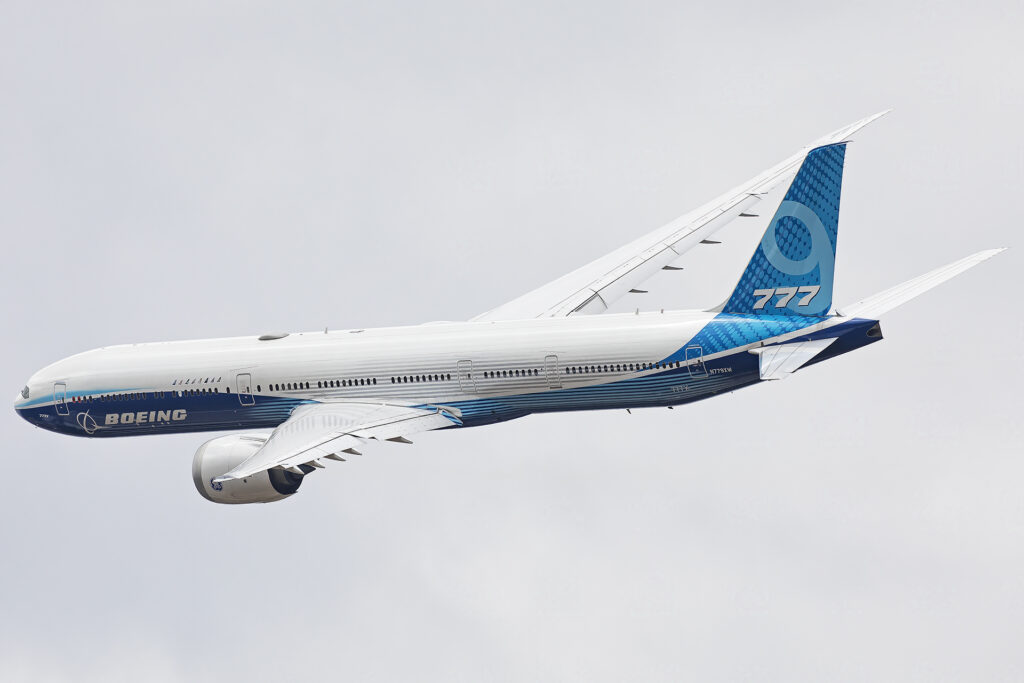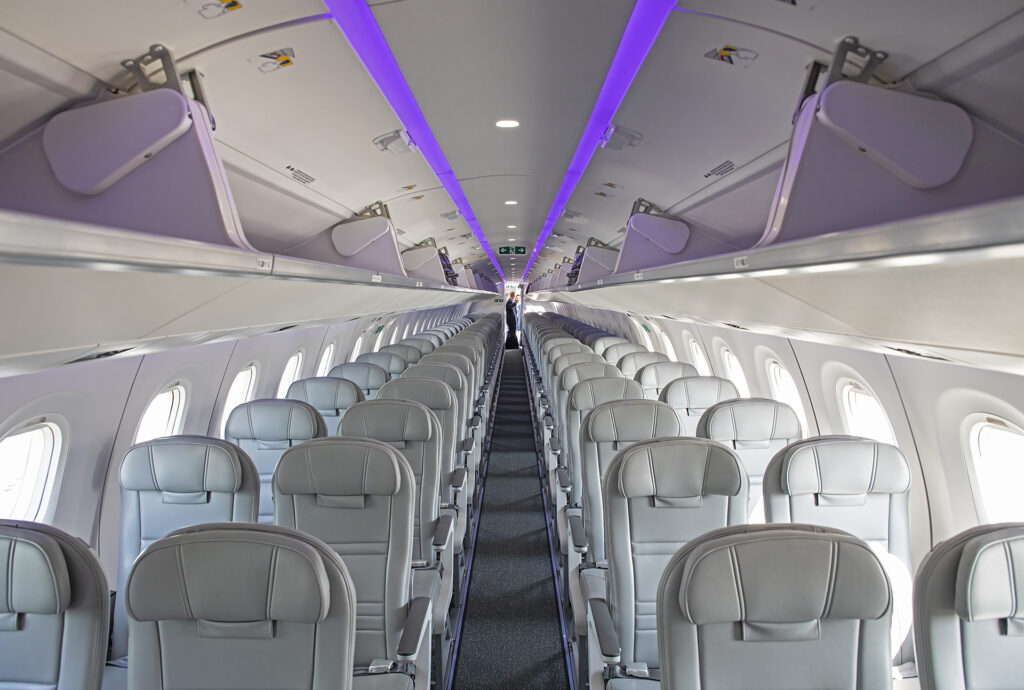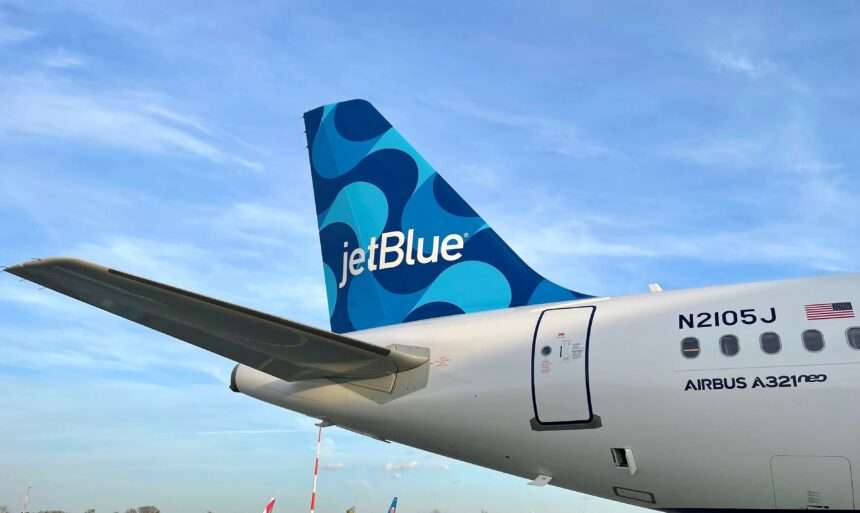The World Health Organization (WHO) stated that COVID-19 is no longer a global health emergency. Let’s take a look back at how the pandemic affected the aviation industry.
In March 2021, AviationSource released a book called “Aviation & COVID-19”, where we documented what the effect of the pandemic was on each individual segue of aviation.
The book particularly looked at the time period of March 2020-2021.
Over the course of today, each Chapter from the book will be released for our audience to read for free.
Without further ado, let’s get into it!
Aviation & COVID-19 Chapter 7: The Aircraft Manufacturers…

Like with airlines and airports, manufacturers within the industry have been hit especially hard during the pandemic.
From lower output on the production line to delivery deferrals coming from all over the world, aircraft manufacturers have been feeling the pinch.
This chapter will look at how Airbus, Boeing, and Embraer have fared.
Airbus

Airbus’ segue way into the crisis indicated a portrayal of strength to get through this pandemic, stating at the time that “it will have over 30 billion [EUR] ($32 billion) in liquidity to sustain its production, including a new credit facility, worth up to 15 billion [EUR] ($16 billion)” (Garcia, 2020).
Even CEO Guillaume Faury expressed considerable confidence that the industry would get through this pandemic (ibid):
“Our first priority is protecting people while supporting efforts globally to curb the spread of the coronavirus. I am convinced that Airbus and the broader aerospace sector will overcome this critical period.”
Such determination was seen particularly at the manufacturer’s plant in Filton, where they announced that the site will “remain open” in order “to live up to our societal role as a responsible employer” (Baker, 2020).
Airbus was very quick to adapt to the restrictive circumstances ongoing around the world at the time, especially through the adoption of its contactless aircraft delivery, dubbed “e-Delivery, where all the usual parts of an aircraft sale are conducted without anyone needing to travel” (Bailey, 2020). At the time, this was considered to be a bold move, especially with the business aiming to keep things within the usual status quo of 2019. A sense of normality.
That being said, in the same month that e-Delivery was announced, the manufacturer was forced to cut “aircraft production by a third” due to the pandemic, which at the time offered an expectation that “a wave of job losses” were to be triggered “across the global aerospace supply chain” (Hollinger, 2020).
Such numbers included the cutting of A320 production from 60 down to 40 a month, the A350 from ten to six, and the A330 down to 24 a year from the original target of 40 (ibid). On top of this, the manufacturer “shelved plans to create a new assembly line” for the A321 in Toulouse (Goodley, 2020).
By the end of April, Faury once again commented to the media that the company is going to take “a somewhat schizophrenic approach” when it comes to dealing with the ever-emerging circumstances of the pandemic, which meant “coupling an aggressive short-term cost-cutting program with a longer-term positive outlook that demand will recover” (Buyck, 2020).
In that same conference, Faury’s changed attitude towards the pandemic was clearly evident when he said that “the COVID-19 pandemic represents the gravest crisis the aerospace industry has ever known” after hitting a 481 million EUR loss in the first three months of 2020 (Carroll, 2020).
Despite this, Airbus, thinking more about the social impacts, began “developing a modification for A330 and A350 family aircraft which will enable airlines to install freight pallets directly onto the cabin floor seat tracks, after removal of the economy-class seats” (Aerospace Manufacturing, 2020).
This, of course, would have helped “the industry to address the high demand for humanitarian flights to transport large quantities of medical equipment” to countries around the globe (ibid).
In the same month, reports about commercial deliveries were announced, with the manufacturer delivering only 14 commercial jets in April 2020 compared to 70 in the same period last year, clearly highlighting the drop in demand for such aircraft (Kasper Oestergaard, 2020).
By June 2020, the outlook got a little bleaker for the manufacturer. After weeks of speculation, Airbus announced “a reduction of around 15,000 positions”, which are due to be completed “no later than Summer 2021”, with “information and consultation” processes beginning (Airbus, 2020).
Delivery numbers dropped by the first-half report, where Airbus had only delivered 196 aircraft compared to 389 in the first half of 2019 (1H2019), and the manufacturer, of course, cited the crisis as the main reason behind this (Airbus, 2020a).
Revenues at the manufacturer had nearly halved, with it being recorded at 18.9 billion EUR compared to 30.9 billion EUR in 1H2019 (Airbus, 2020b).
It was easily imaginable that COVID-19 put a lot of strain on the purse strings of Airbus, especially with Faury signaling that the manufacturer “would sue airlines that are not taking delivery of new aircraft”, bringing about “an increase in tensions between the manufacturer and carriers” (Corbett, 2020). Whilst he remained hopeful about compromise at the time, the power of contradiction remained strong, especially with him also stating that Airbus would “always try to find a different route than going to court” (ibid).
The second half of 2020 was a bit more positive, appearing for Airbus. Despite the crisis, there were some milestones that were achieved. Firstly, the manufacturer was able to expand its sustainable aviation fuel operations to commercial aircraft deliveries, with Air Transat being the inaugural carrier to receive this service with its A321 Long Range aircraft.
July saw Frontier Airlines receive its 100th Airbus A320 Family aircraft via a triple delivery from leasing giant CDB Aviation. September also saw the manufacturing giant deliver MSN10000 to Middle East Airlines. Whilst it was not the 10,000th aircraft itself, which came from Singapore Airlines Airbus A350 in 2016, it was still something notable and well-celebrated.
September 2020 also saw Airbus take over Boeing “as the biggest aerospace company” due to Boeing’s annual sales going down to $76bn and Airbus’ going up to $78.9bn (Marrero, 2020).
Delivery numbers were beginning to show a level of steadiness, too, with September numbers being recorded at 57, which was only 14 less compared to the same period in 2019 (Airbus, 2020c).
On top of this, the manufacturer also delivered its 1,500th A330 Family aircraft, which was a Delta Air Lines A330neo, marking “a historic milestone for the European airframer” (Foster, 2020). The A220 also made history in Alabama when the first-US assembled version of the variant was delivered to Delta as well.
Of course, it was not always positive. Delivery deferrals came about by airBaltic, Qatar Airways, and others, which of course, would result in further detriment to revenues not just in 2020 but continuing on into 2021 and beyond.
Faury even “warned staff of necessary job cuts” in an internal letter seen in September 2020, which had a chance of adding on to the 15,000 previously announced in June (Marrero, 2020a).
By October, the manufacturer had 144 aircraft waiting on the ground to be delivered to customers, which of course, increased as further deferrals took place. This led to Airbus reaffirming the deterioration of the industry once again, relating to the industry loss expectation of $84bn in 2020.
The year-end signaled around a $5bn loss for Airbus in terms of such delivery deferments, offering another grim look at what the new year could be like for the manufacturer.
But of course, Airbus wanted to offer some level of confidence going into 2021, when in November announced that the brand new A321XLR variant would begin production, with the aim for deliveries to occur in 2022.
And on the existing A320 family, the manufacturer was seeking to increase production of the aircraft to 47 per month from 2021 due to increased confidence in a stress-tested backlog of orders.
Airbus even secured an order over Christmas, with Air Greenland ordering one A330-800neo. Whilst it was one order, it wanted to end the year on a high in the wake of adverse negativity.
February 2021 highlighted the increased level of damage imposed on the manufacturer via its full-year financial results (Airbus, 2021):
- 268 aircraft were ordered in 2020 (Down from 768 in 2019).
- Orderbook decreased to 373 billion EUR (2019: 471 billion EUR).
- Consolidated revenues at 49.9 billion EUR (2019: 70.5 billion EUR).
- 566 aircraft were delivered in 2020 (Down from 863 in 2019).
It remains clear that whilst Airbus attempted to achieve milestones and deliver as many aircraft as possible, the numbers obviously show how hard it was hit. And that, of course, is the consistent reality seen across the manufacturers that this chapter will explore.
The only hope for Airbus now is that it can achieve better performance in 2021, especially as countries are beginning to establish roadmaps out of the crisis.
Boeing

The last thing that Boeing wanted after the 737 MAX crisis was a global pandemic to make things even more difficult. The manufacturer began its COVID campaign by warning that “deliveries of new planes in the first quarter of the year” could be affected by this (Josephs, 2020). And they were not wrong.
Boeing had then prepared to take out loans, which it later exercised the right to in March, where it “tapped the full amount of a $13.8bn loan” due to such weakening in the balance sheet (Bushey & Rennison, 2020).
Even at the early stages, Boeing’s turn towards a negative outlook got the notice of former U.S. President Donald Trump, who stated that at the time, “the U.S. government is considering providing financial assistance” for the manufacturer (Insinna & Mehta, 2020).
And thus, the cost-cutting began. One notable element that came from Boeing was that the salaries of the Chief Executive Dave Calhoun and Larry Kellner, the Board of Directors Chairman, would forego their salary until the end of the year.
Things really started to hit home for Boeing in that same month, especially when “a Boeing worker who came down with the… disease caused by the coronavirus” died, which marked the first death among the infected employees (Gates, 2020). This, of course, would have expedited actions from Boeing, which we saw throughout 2020.
By April, production of the Boeing 787 at its plant in North Charleston was suspended due to the pandemic, which placed 7,500 people on furlough as a result, with Boeing emphasizing that health and safety remained the top concern due to the virus (Tripp, 2020).
With the continued theme of political attention, this intensified particularly on the side of House Democrats, who “urged Boeing to accept government aid to help weather the… pandemic” (Josephs, 2020b), especially with Calhoun not wanting to relinquish any stakes to the U.S government with him stating (Josephs, 2020c):
“The simpler, the shorter term in nature, the better. All we want is to make sure the credit markets are open for business. If the government requires an equity stake, we just look at all the other options, and we got plenty of them. If there is no government support and the credit markets do not reopen, it will be fairly quick, but we can still make it to the other side”.
Calhoun later stated in the same interview that if this pandemic goes on for longer than eight months, then the company may not make it, imposing a very short-term view of the pandemic at that time (ibid).
Boeing later stuck to its guns and went for an alternative measure to receiving government aid through the borrowing of a “massive bond offering totaling $25 billion” (Bomey, 2020).
By May, the manufacturer had recorded no new sales for April 2020, which was Boeing’s “worst delivery month since 2008” (IndustryWeek, 2020). In that same month, it took the decision to cut 15,000 jobs, with Calhoun stating that the pandemic is “delivering a body blow to our business” and demand for commercial airline travel “has fallen off a cliff” (BBC, 2020).
Given the volatility of the industry at that point, those in the industry noted that Calhoun did not help himself or the industry when he suggested to NBC News that a major U.S carrier “just has to go out of business”, without actually naming who that carrier might be (Horton, 2020).
By July 2020, Boeing had revealed that 462 737 MAX orders had been lost due to the continued effects of the pandemic, reflecting a 153% increase compared to the same period in 2019, with continued pressures on the American Airlines side with the airline stating, “that it would not take delivery of 17 Boeing 737 MAX aircraft unless the airline can secure financing to pay for orders” (Imat, 2020).
The headaches with the 737 family continued in the Summer, with the Federal Aviation Administration issuing “emergency Airworthiness Directive(s) for 2,000 Boeing 737s that have been parked” due to the pandemic and the level of overcapacity in the industry (Gilbertson, 2020). This, of course, would begin to make things more difficult for the manufacturer as customer satisfaction would falter as a result.
By October, the severity of the pandemic had altered the forecasts that Boeing released a year earlier, with the manufacturer slashing “its 10-year forecast for new aircraft demand by 11% from a year ago” due to the expectation of “more than half of aircraft deliveries” will be for fleet replacement, and not renewal (Josephs, 2020d).
The manufacturer had added to that level of severity by stating in November 2020 that “hundreds more of its remaining 4,102 orders could be in jeopardy because of the financial health of some customers” (Tangel & Pasztor, 2020).
Boeing ended 2020 on a relatively high, however, with Ryanair announcing an order for “75 new Boeing 737 MAX jets as the aircraft prepare[d] for a return to the skies,” which brought the orderbook to 210 units at a list price of more than $22bn (Ford Rojas, 2020).
Moving into the new year, it was not particularly a good start for Boeing, with the manufacturer recording a “net loss of nearly $12 billion for 2020” as well as placing a delay on “the debut of its new 777X jet until 2023” but offered some hope that production of the 787 would restart in 2021 as the industry begins to recover (Duffy, 2021).
The whole theme of passengers requiring COVID-19 tests before arrival at a domestic U.S. destination concerned Boeing a lot, stating that it “could pose significant economic harm” and “potentially lead to bankruptcies” (Shepardson, 2021).
By February 2021, the manufacturer was able to give itself “more breathing room” financially as it “borrowed $9.825 billion in the corporate bond market… through a three-part financing that will be used to repay the debt” (Wiltermuth, 2021). This would pave the way towards some level of recovery whilst having the funds to spend on such an outcome.
By the time of writing, Boeing had announced deliveries of 22 jets in February 2021, which was the first time in 14 months that the manufacturer had become positive in its “net order” due to the roll-out of COVID-19 vaccines placing some level of confidence into the market (Ajmera, 2021).
Also, in the same date-based situation, 2021 appears to be the year where airlines are beginning to look towards recovery, especially on the United Airlines site where on March 1, 2021, it placed an order for “25 new Boeing 737 MAX aircraft to receive in 2023” as well as the airline moving up “the delivery of others as it prepares to… meet post-pandemic demand growth” (Rucinski, 2021).
It is a fair assumption to say that Boeing had more of a rough 2020 than the likes of Airbus did, especially when it came to dealing with the 737 MAX crisis on top of that, too, and getting the aircraft back in the air.
With governments around the world approving its re-entry back into service, it can hopefully ramp up production and acquire more revenue, which at a time will be vitally important to pay back loans and come back to some level of financial normalcy. Whatever that will look like is unclear.
Embraer & The COVID-19 Pandemic…

Embraer started the pandemic off with the indication that the manufacturer was “receiving requests to defer the delivery of new aircraft” “due to the impact of the coronavirus and the slowdown of global travel” (Loh, 2020). However, as John Slattery, the then Embraer Commercial Aircraft President and CEO, stated, it was not anything that would be marked as substantially impactful (ibid):
“We had some inbound requests for relatively short-term deferments, but nothing that would push aircraft [delivery] out of the calendar year. We are talking about a delay of a few weeks or a month,”
In the same month, being March, the manufacturer then placed employees who could not work remotely on paid leave until the month-end, which would have been pertinent to office workers, as opposed to those who worked on the production line. It did, however, force Embraer to suspend its financial outlook for 2020, as at the time, the climate-to-be was relatively unknown (Wolfe, 2020).
By June, the climate was then known, with the plane maker stating in June that “it will receive a $600 million loan, financed partly by the Brazilian government”, with Embraer lobbying for such a loan since April (Reuters, 2020).
The month previous saw Embraer deliver just 14 aircraft in the first quarter of the year, which represented a 30% drop in deliveries compared to the previous year (Wolfsteller, 2020). The manufacturer at that time blamed Boeing for this due to the joint venture with the Brazilian manufacturer falling through (ibid). By the first half of the year, just 31 aircraft were delivered, dealing even more of a negative blow to the manufacturer (Hemmerdinger, 2020).
Such blame on Boeing had led competitor CEO Guillaume Faury at Airbus to label such a joint venture as “collateral damage”, especially with the pandemic making things even more difficult for Boeing and Embraer (Garcia, 2020a).
On top of this, the delivery deferrals began to roll in, with Brazil’s third-largest airline Azul, postponing the delivery of 59 E195-E2 aircraft to 2024 as opposed to the previous schedule of 2020 to 2023 (Machado, 2020).
However, Embraer, by the Summer season of that year, remained pretty confident, particularly in the Asia-Pacific market, where they believed that airlines in that region “will seek to optimize their fleets through the adoption of smaller jets” (Waldron, 2020).
By August, the manufacturer had taken the decision to delay the launch of its E175-E2 aircraft to 2023, as stated in the second-quarter financial results (Kevincm, 2020):
“Given the current market conditions for commercial aviation as a result of the Covid-19 pandemic, Embraer confirms the rescheduling of the start of operations of the E175-E2 jet until 2023.”
“Embraer is continuing the development of the aircraft, although now on the revised timeline. The Company believes that the E175-E2 will still be available with more than adequate time to enter into service in the commercial aviation market to meet market demand for the jet.”
Such Q2 financial results highlighted a loss of $315 million, having only felt the proper effects of the pandemic for five months, with the commercial aviation branch falling 82.8% in deliveries (Merco Press, 2020).
By September, the manufacturer had taken the decision to cut 900 jobs, with Embraer once again blaming Boeing and the pandemic for this decision (Jauniskis, 2020).
“The situation worsened as a result of the duplication of structures associated with the carve out of the company’s commercial aviation business in preparation for the partnership, which was terminated at the initiative of Boeing, as well as the expectation that the air transport sector will not recover in the short- or medium-term,”
By the end of the year, the manufacturer still forecasted a high number of aircraft with less than 150 seats by 2029, with the figure being 5,500, with the reasons cited being the industry having the opportunity to reinvent itself (Wolfsteller, 2020a).
On top of this, in order to remain neutral on the pandemic, the manufacturer stated that it is preparing for a “very challenging 2021”, especially at that time when another wave of the virus was battering the U.S. and Europe (Rochabrun, 2020).
The new president and CEO of the company Arjan Meijer finally ended 2020 with a strong message that the commercial wing of the company is not for sale at all (Garbuno, 2020):
“We have many questions about the Boeing deal as to whom will Embraer sell the commercial aviation department. Let me take that out of the air right now: the commercial aviation is not for sale. It is out of the shop window. We have decided to integrate it again into Embraer. We are now one organization. So, commercialization will not be sold, but we are looking for partners on programs.”
Having then delivered 71 jets in the fourth quarter of 2020, the overall count for the year was only 130, representing a 35% decline from 2019, bringing an end to what was a poor year for the Brazilian manufacturer.
That being said, however, with 5,500 jets needed by 2029 in such a segment, the removed capacity could bring in a new wave of sales momentum for firms like Embraer, who have thrived in a regional market like this. All we can really do in the meantime is sit back and wait to see how recovery goes.
What we do know is that aircraft manufacturers have had a huge chunk of their business, which was formed in the golden years post-financial crash, removed, and will take many years once again to get up to that point.
As with airlines and airports, the question needs to be posed regarding industry readiness. Is the industry just going to keep in circles again and again and not grow more than it has done in the past?









